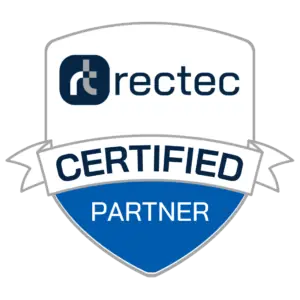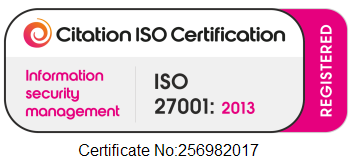SEO For Beginners
Search Engine Optimisation (SEO) is essential to any careers website, not only to generate visits and applications, but to present your organisation correctly and positively in search results.
It is a daunting subject as it can become very technical and it is also made complicated by many search engine optimisation companies. The logic behind SEO, however, is quite logical and simple. Search engines are basically computers and do things in a very logical and methodical manner. They read from left to right and top to bottom. When we start to think about SEO, we just need do things in a logical manner. We need to understand what we are doing, we need to allow Google (and other search engines) to read our website quickly and make it clear as to what the website is all about.
There are four very important elements to consider, even before you even start to undertake any aspect of the optimisation of your website. These four areas are:
Your Marketplace
Website Architecture
Website Content
Time
Your Marketplace
The very first things you need to think about when you embark on an optimisation exercise is to “Google” the most important key phrases for your business and see who appears.
Check which companies are paying for their positions.
Check which companies appear at the top of the “organic” (free) listings.
See who appears in the Google Business section.
If it’s a job search you have entered, check who appears in the Google jobs section and which jobs board or website the jobs are being displayed from.
Read how these companies Meta Titles are displayed.
Check to see how they have constructed their Meta Descriptions.
Try a combination of similar phrases and see if different companies appear.
Are there companies that appear across multiple searches? Do the search results change when a location is entered?
Check at the bottom of the pages for Google’s related searches
Make a note of all of the phrases that you have used, as well as Google’s related search terms and these will be the start of creating a list of the most important key phrases for your website. There are other free, tools that will help to create a list of the most popular key phrases and I will share them in a future blog.
Tip: As a quick cheat, you can go to a top performing website and copy their Meta data from the source code of their website. This is a quick way to get started. It doesn’t always work as Google does take into consideration other things, such as the age of a domain name and inbound links etc.
Also make a note of the companies that appear well for all of the main searches phrases you have tested. These companies are obviously the ones to watch as they are doing something right and may well have spent a fortune on SEO!
You have a list of key phrases; you know who your main competitors are, so now you need to start the hands-on SEO process.
Website Architecture
We now need to review the architecture of your website. We take for granted that our website systems are ready for the search engines and that’s because we have learnt from experience over the years and have made mistakes and done things wrong. We have reacted to these issues over time and our systems are always “search engine ready” before we start the SEO process. Many other websites are not ready for SEO, however.
We need to make sure that search engines can navigate through each and every pages of your website. This basically means that each and every page, each navigation menu, every internal link, every image, every footer link, every job and every content page is accessible. We also need to ensure that the website is relatively quick to load.
Many websites fail at this early stage because there are broken links, missing pages, missing graphics and other simple errors within the website. If the website is extremely slow, then this can also be a big problem. If the search engines cannot crawl or access a page it may report a broken link. It may also not be able to crawl through the website any further. If your website has multiple broken links then this will not help your website in the listings.
Once we know that every section of your website is accessible, we can move on to the next stage.
The next thing to do is to ensure that we have a website map, preferably a Google authenticated XML website map. A XML sitemap is a file that lists the URLs for a site. It allows webmasters to include additional information about each URL: when it was last updated, how often it changes, and how important it is in relation to other URLs in the site.
All of this basically means that when a search engine visits your website, it is able to navigate through your website and be able to read and document the content of it. We make sure that all of our websites are built so that they are navigable by search engines and the XML sitemap supports the initial submission, informs it as to what content is under each section and how often the section is updated.
All of this may sound quite simple and obvious, but you would be surprised how often websites are built that are very slow, with broken links and inaccessible pages.
Meta tags and URL creation are also an aspect of the technical infrastructure of a website, but as they are fundamentally linked to the content of each page, I have described their purpose below.
Website Content
The third part and probably the most important part of SEO is the content. You need to ensure that the content of your website is targeted towards your intended audience, including the key search terms that your potential clients will use to find you. We can assist here with our content creation service which includes SEO work. Your content needs to be informative, unique and well written. It is also important to create reasonably lengthy articles, so make sure that the content of your pages or articles are a minimum of 400-500 words in length. Longer articles are great, but anything under 200 words may not be indexed well.
You also have to make sure that you keep the content flowing regularly. The search engines want relevant content and they want it regularly!
You will already have a good idea of the main key phrases you wish to target, so you can insert them into your content and write your content to support your key phrases.
When you are happy with your content and it includes some relevant key phrases and phrases from Google’s related search terms, you can now add the Meta tags and create your URL, prior to uploading or activating your page.
Meta Tags
I will write more about Meta tags (Meta Title, Meta Description) and URL creation, in future articles, but the following is a simple overview.
The Meta Title of a website page is a 60-70 character statement of what the page is about. It should be a simple statement of the subject matter of a page, or about your business. It needs to be relevant and it needs to include, where possible, key phrases about your business or about the page you are writing about. If the page is a job, it needs to include the job title and where the job is located.
A bad example of a Home page Meta title would be:
Home – Company Name
A good example of a Home page Meta title would be:
Recruitment Website Design, Start Up Recruitment Websites, Jobs Board Design
The Meta Description is a longer description of the page and you have a limit of up to 200 characters to describe the page. Within this description, you can include your company name, key phrases and call to action statements, such as Apply Here, Register Here etc.
There are also different types of Meta tags and they are used for different purposes, such as OG (Open Graph) tags, which are used for news and social media updates.
In summing up, make sure your Meta tags relate to your business and that they include the search terms you wish to be found for. Your Meta tags also need to be readable, simple and obvious. People will need to make a split second decision as to whether they should visit your website. The Meta tags should also reflect how you wish your business to be presented on search engines, in comparison to your competitors. Make your website listing stand out.
Time
Over the years we have received many an email and call from clients asking why their website can’t be found on search engines, literally few days after their website has been launched. We do try to explain that you have to be very patient.
The search engines will visit a page of your website at a specific time and date and they will take a snapshot of the page as it was displayed at that specific time and date. It is so important to note that Google and the other search engines work at their own pace. It may be two or three weeks before it visits that page again, so any updated implemented on a page may not appear on the search engines until the page is next indexed.
This is why it is so important to keep a regular flow of new content added to your website at different periods throughout each month. It is also important to add links to your new pages and on to social media pages to speed up the indexing process.
The XML website map informs the search engine spiders as to how often specific pages are updated and, in time, if certain Blog or News pages are updated regularly with new content, the search engines will start to visit the page more regularly to index your content.
Keep your content flowing, keep linking to it from busy pages and keep it flowing often. If you need it indexing quicker, then use paid advertising. Most importantly, remember that search engine optimisation is a long term process, planned over years and not weeks and months.
You can read more about our search engine optimisation services here.
Contact us for a free consultation regarding SEO on your careers website.




Comments are closed